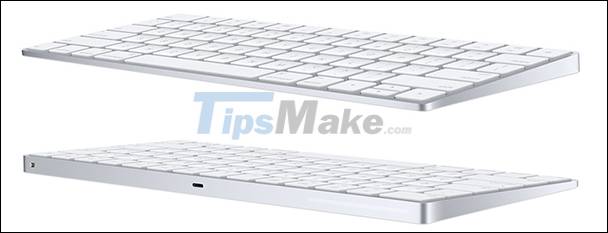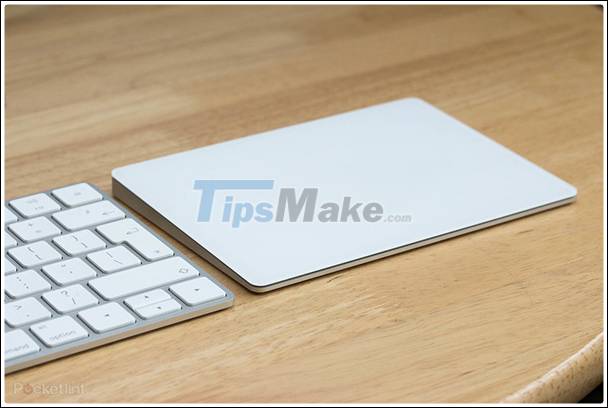How to turn a MacBook into a desktop Mac
Use a separate display with a MacBook
Using a separate display with a MacBook can be very versatile. You can use your laptop with a monitor, or connect it to a monitor and no longer need a MacBook. macOS will remind you of things like your resolution and how your windows are organized whenever you connect or disconnect your monitor.
Understanding the limitations of the MacBook is important. The year of the hardware's manufacture and capabilities will tell you. The best way to find out which model your MacBook belongs to is by searching the Apple Support website.
For example, searching for '15-inch MacBook Pro 2016' will reveal the specs for the base 2016 model. In the 'Video Support' section, it is stated that this model supports two external displays with 5120 x 2880 resolution at 60Hz or four displays with 4096 x 2304 resolution.
You can use the same method to understand how to connect any external monitor to your MacBook. The 2016 MacBook Pro should look for native DisplayPort support over USB-C, which means it doesn't have HDMI output, only USB-C, so is 'native'. The spec sheet says HDMI, VGA and Thunderbolt 2 are supported as well, but you need an adapter to make it work.

If you're using Thunderbolt to connect your monitor, you can chain the monitors together. In other words, you'll connect one monitor to your MacBook and a second monitor to that first.
Both screens will then display, and you can use them independently in macOS. Make sure you check that your MacBook and monitor have the necessary tech support before you buy.
Select an external keyboard
The keyboard is also an essential accessory when connecting the MacBook to an external display. The best choice is Apple's Magic Keyboard, which comes in two types with a numeric keypad and a non-numeric keypad.
Both keyboards connect via Bluetooth, are rechargeable, and use Lightning charging connectors for Apple's iPhones and iPads. There's a full set of multimedia keys and the usual Mac-specific layout you're used to on your MacBook keyboard.

While Apple makes a solid keyboard, there are plenty of other options. Almost any USB or wireless keyboard (RF or Bluetooth) will work with your Mac. You can also use apps like Karabiner-Elements to customize your keyboard layout. This also means you can use keys like Windows Alt to Command - so you can use them on a Mac.
The mechanical keyboard is also not a bad choice. Although regularly marketed to gamers, it is ideal for those who spend a lot of time in the day typing. Each key design feels and sounds different, but they can be individually replaced with custom keys if desired.
Adjust the mouse pointer
If you're reading this, you're familiar with the MacBook's oversized, multi-point touchpad. If you want to emulate its feel and functionality, there's nothing better than Apple's Magic Trackpad 2. There is no product on the market like this one.

Most regular mice will also work with your Mac, whether they are wired or wireless. Some wireless mice require an RF dongle that you connect via the MacBook's USB port. Magic Mouse 2 will do a good job, and regular mouse models do just the same.
Don't forget the hard drive
One of the biggest limitations of modern laptops is the storage capacity. SSDs are fast and durable, but they're still quite expensive compared to mechanical hard drives. If you want your MacBook to function as a desktop computer, you'll likely need some sort of external memory.
This is as simple as a hard drive attached to a USB. The drive can be used to back up your Mac with Time Machine and store personal data. However, if your budget allows, you can choose an external SSD. It will give you much faster read and write speeds.
Docks and Hubs simplify the transition
Dock and hubs help two use MacBooks: expand the number of ports and simplify using the MacBook as a desktop computer.
The first benefit is pretty obvious. If you have a recently made MacBook, you won't have anything other than a USB-C (Thunderbolt 3) port to connect external devices, such as a USB stick. The Hub provides a wider range of ports, allowing you to connect to multiple devices.

Docks really shine when they're used as a single connection point for all the peripherals on your desk. If you connect all your monitors, storage devices, and other peripherals to one dock, you can simply connect your MacBook to an adapter or outlet when you get home and that's it. You already have a desktop computer.
You should read it
- 6 Ways to Fix Macbook Not Powering Up 100% Successfully
- MacBook Air 2019 review - beautiful and durable laptop
- Instructions to restore boot sound on the 2016 MacBook Pro
- Trick to fix the MacBook not catching the standard wifi and the most effective
- How to turn on and off the Picture in Picture (PiP) feature on Macbook
- Compare MacBook Pro and MacBook Air
- Understand the connection and key presses on the Macbook
- Apple launched a standalone ad for the MacBook Air
May be interested
- How to turn off battery management on Mac?
 macos catalina 10.15.5 brings a new feature of battery health management, which is used to increase the battery life of macbook and change the frequency of full charge of the device. so what is this mode and how does it work?
macos catalina 10.15.5 brings a new feature of battery health management, which is used to increase the battery life of macbook and change the frequency of full charge of the device. so what is this mode and how does it work? - How to turn off self-correcting spelling errors on the Macbook
 if you do not need this function and do not want the red dash to appear, then this is how to turn off the spell check function on macos tools.
if you do not need this function and do not want the red dash to appear, then this is how to turn off the spell check function on macos tools. - MacBook Air 2019 review - beautiful and durable laptop
 this year's macbook air is $ 100 cheaper (vnd 2,300,000) compared to last year's model. also, the macbook air's intel y series cpu will be great for some, but not as fast as the u-series chips in pcs and the new 13-inch macbook pro.
this year's macbook air is $ 100 cheaper (vnd 2,300,000) compared to last year's model. also, the macbook air's intel y series cpu will be great for some, but not as fast as the u-series chips in pcs and the new 13-inch macbook pro. - Can't turn off Safari on Macbook, what to do?
 many apple friends are complaining about not being able to turn off safari on macbooks and don't know how to solve it.
many apple friends are complaining about not being able to turn off safari on macbooks and don't know how to solve it. - Compare MacBook Pro and MacBook Air
 the article compares macbook pro and macbook air - two types of laptop products from the apple brand, helping you understand the pros and cons of each type if you are wondering between these two products.
the article compares macbook pro and macbook air - two types of laptop products from the apple brand, helping you understand the pros and cons of each type if you are wondering between these two products. - Understand the connection and key presses on the Macbook
 the macbook laptop line has always been ranked as a luxury laptop with beautiful design, smooth and stable operating system, famous in the world, which was launched by apple in 2006.
the macbook laptop line has always been ranked as a luxury laptop with beautiful design, smooth and stable operating system, famous in the world, which was launched by apple in 2006. - How to turn on airdrop on macbook / iPhone / iPad
 instructions on how to turn on airdrop on macbook / iphone / ipad so you can share data with each other, this is a built-in application on macbook
instructions on how to turn on airdrop on macbook / iphone / ipad so you can share data with each other, this is a built-in application on macbook - Apple launched a standalone ad for the MacBook Air
 with no need to focus on defaming competing products, apple's new ad delivers the message this is a beloved laptop.
with no need to focus on defaming competing products, apple's new ad delivers the message this is a beloved laptop. - How will the new MacBook get more upgrades?
 after a year of not officially launching a new laptop, apple is preparing for the event in a very thoughtful, majestic way to welcome the latest member of the macbook.
after a year of not officially launching a new laptop, apple is preparing for the event in a very thoughtful, majestic way to welcome the latest member of the macbook. - The brand 'MacBook Pro' can be killed
 this product line can be replaced with 'the new macbook' using haswell microprocessor and designed like macbook air in 2013.
this product line can be replaced with 'the new macbook' using haswell microprocessor and designed like macbook air in 2013.










 How to set up a local web server (Local Web Server) on Windows, macOS, and Linux
How to set up a local web server (Local Web Server) on Windows, macOS, and Linux Top 8 best photo editors for Mac
Top 8 best photo editors for Mac How to fix Service Battery battery warning on Mac: check charging cycle, calibrate battery of Mac
How to fix Service Battery battery warning on Mac: check charging cycle, calibrate battery of Mac How to copy files from Mac to USB
How to copy files from Mac to USB How to use Finder on Mac for beginners
How to use Finder on Mac for beginners Tricks for using Finder on Mac more effectively
Tricks for using Finder on Mac more effectively